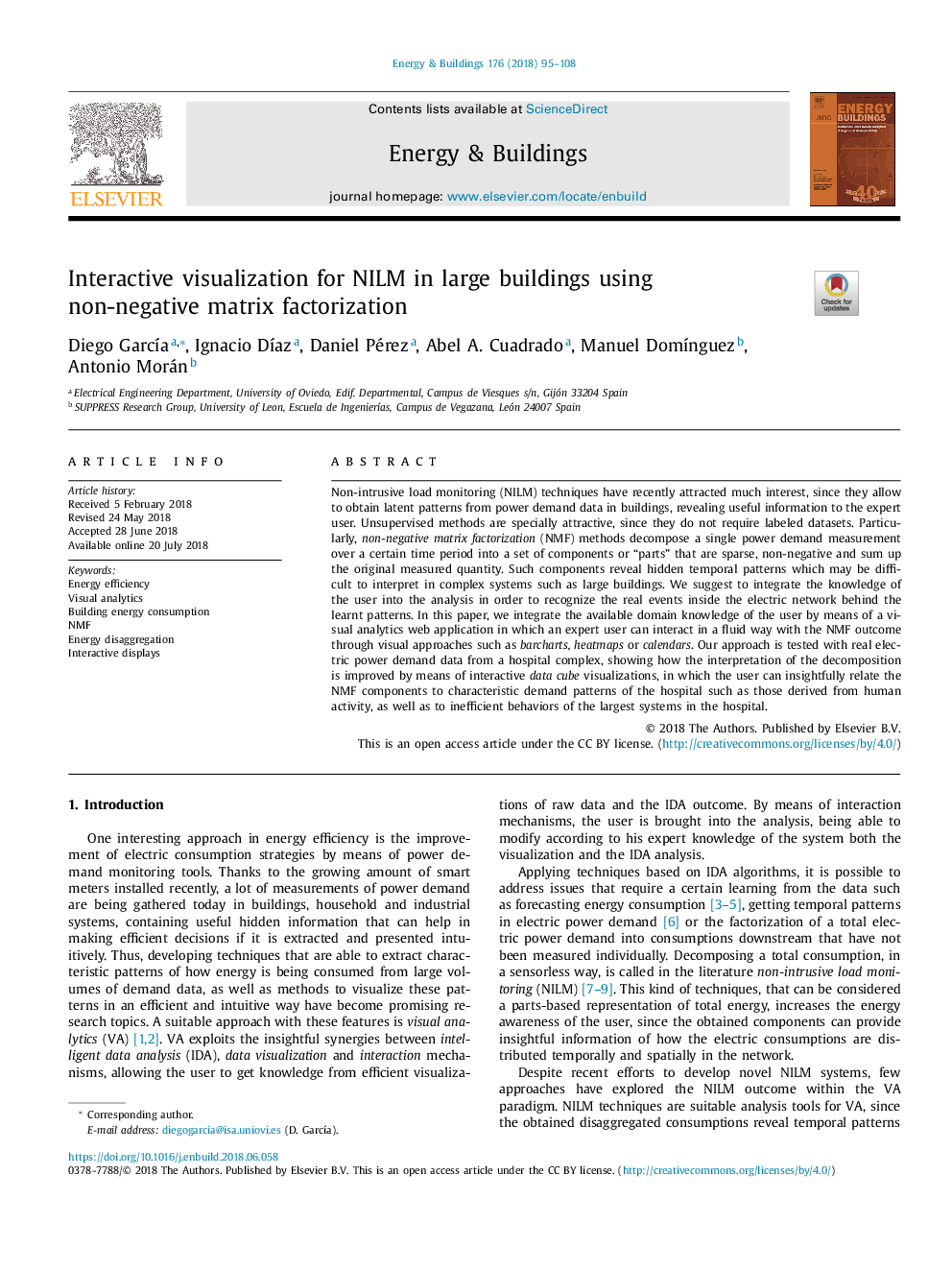| Article ID | Journal | Published Year | Pages | File Type |
|---|---|---|---|---|
| 6726864 | Energy and Buildings | 2018 | 14 Pages |
Abstract
Non-intrusive load monitoring (NILM) techniques have recently attracted much interest, since they allow to obtain latent patterns from power demand data in buildings, revealing useful information to the expert user. Unsupervised methods are specially attractive, since they do not require labeled datasets. Particularly, non-negative matrix factorization (NMF) methods decompose a single power demand measurement over a certain time period into a set of components or “parts” that are sparse, non-negative and sum up the original measured quantity. Such components reveal hidden temporal patterns which may be difficult to interpret in complex systems such as large buildings. We suggest to integrate the knowledge of the user into the analysis in order to recognize the real events inside the electric network behind the learnt patterns. In this paper, we integrate the available domain knowledge of the user by means of a visual analytics web application in which an expert user can interact in a fluid way with the NMF outcome through visual approaches such as barcharts, heatmaps or calendars. Our approach is tested with real electric power demand data from a hospital complex, showing how the interpretation of the decomposition is improved by means of interactive data cube visualizations, in which the user can insightfully relate the NMF components to characteristic demand patterns of the hospital such as those derived from human activity, as well as to inefficient behaviors of the largest systems in the hospital.
Related Topics
Physical Sciences and Engineering
Energy
Renewable Energy, Sustainability and the Environment
Authors
Diego GarcÃa, Ignacio DÃaz, Daniel Pérez, Abel A. Cuadrado, Manuel DomÃnguez, Antonio Morán,
